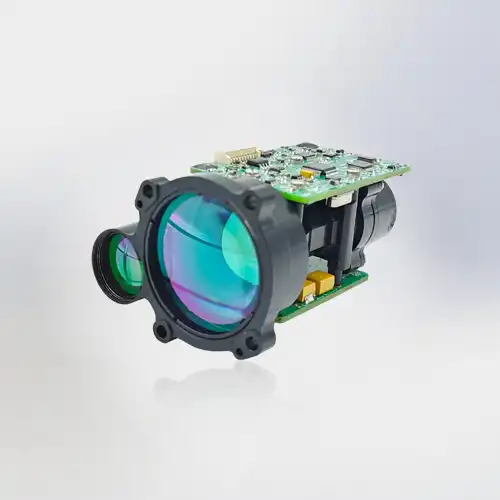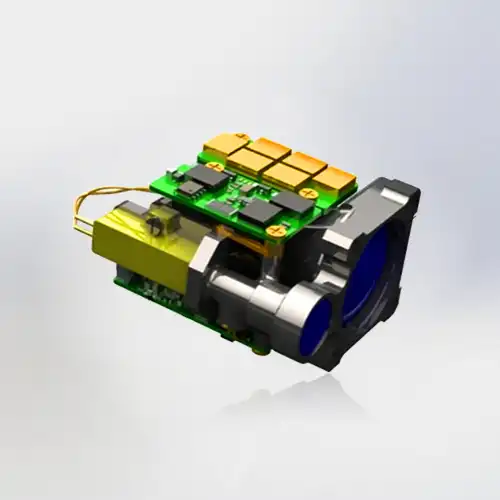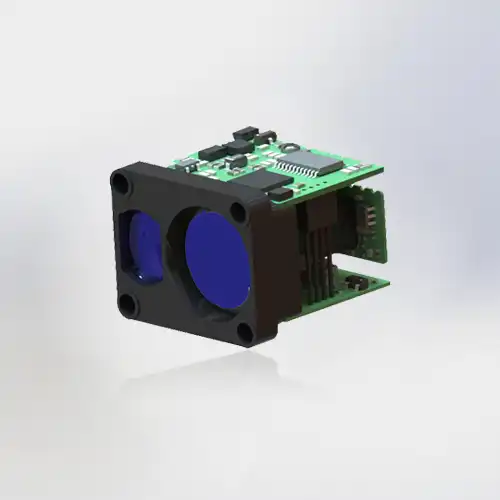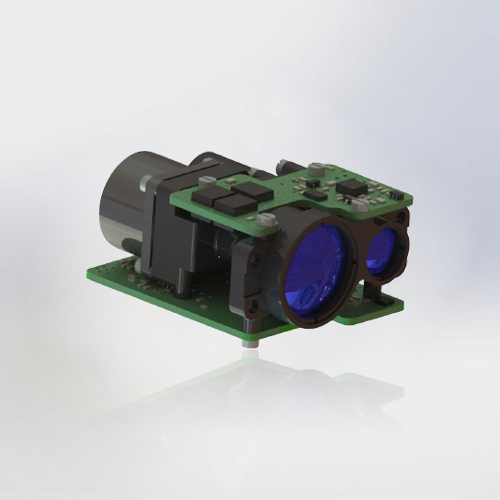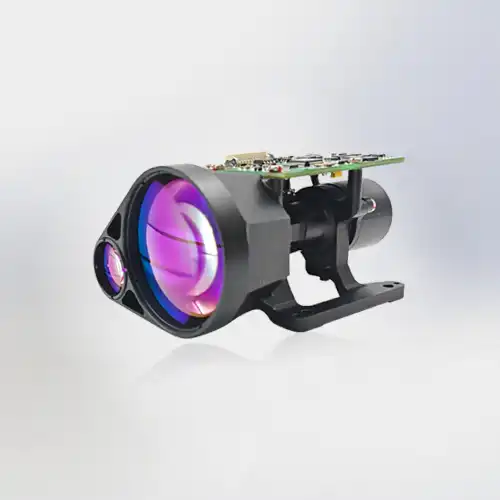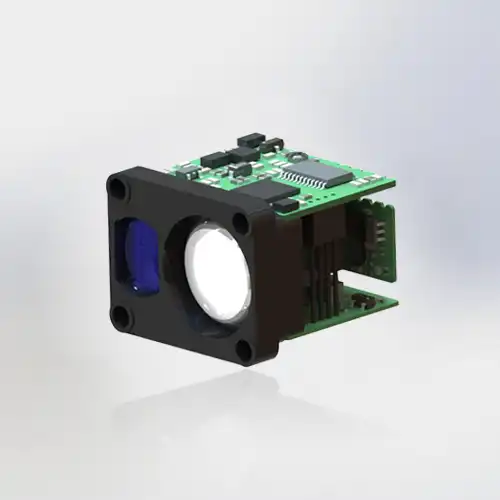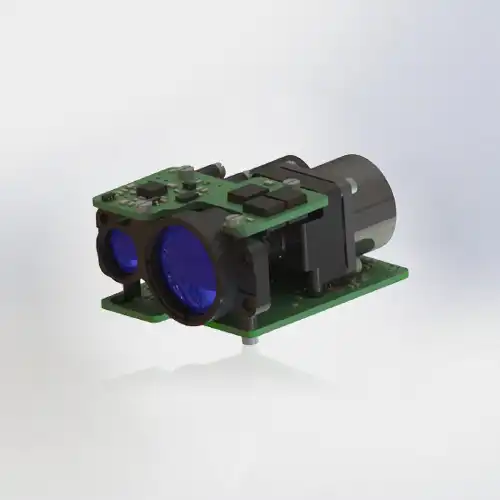What is a photoelectric pod?
A photoelectric pod is an advanced optical-electronic device designed to capture high-resolution images and videos under various lighting conditions. It integrates sensors and sophisticated optics, making it an essential tool in fields requiring precision and reliability.
These devices are pivotal in monitoring, surveillance, and targeting, serving critical roles in defense, aerospace, and maritime operations, among other applications.

How Does a Photoelectric Pod Work?
The photoelectric pod operates on the principles of the photoelectric effect and advanced optical technology. Here’s a detailed explanation of its working mechanism:
Light Detection: The core component of a photoelectric pod is its light detection system. This system typically comprises photodetectors such as photodiodes, phototransistors, or charge-coupled devices (CCDs). When light photons strike these photodetectors, they generate electrical signals. The nature of the sensors can vary depending on the application, with some pods utilizing infrared sensors for night vision capabilities.
Signal Amplification: The initial electrical signals produced by the sensors are often weak. To be useful, these signals need amplification. The pod’s onboard electronics include amplifiers that boost these signals to a level where they can be effectively processed and analyzed.
Image Processing: Once amplified, the signals are converted into digital form and processed by the pod’s onboard computer.
Advanced image processing algorithms enhance the quality of the captured images, improving clarity, contrast, and detail.
This step is crucial for applications requiring precise image analysis.
Data Transmission: After processing, the images or videos are transmitted to a control center or a remote operator. Depending on the application, this transmission can be done through wired connections or wirelessly. In military and surveillance applications, secure and encrypted communication channels are often used to protect the data from interception.
Operational Integration: In many applications, the photoelectric pod is integrated with other systems such as navigation aids, targeting systems, or communication networks. This integration allows for real-time data sharing and enhances the overall effectiveness of the operations.
Photoelectric Pods Application
The applications of photoelectric pods are vast and diverse, spanning multiple industries and sectors. Here are some of the primary applications:
Military and Defense

In military and defense sectors, photoelectric pods are indispensable tools.
They are used for surveillance, target acquisition, and reconnaissance missions.
These pods can operate effectively in various lighting conditions, including low-light and night scenarios, making them ideal for night operations and covert missions. They provide real-time visual intelligence, helping commanders make informed decisions on the battlefield.
Aerospace
In aerospace applications, photoelectric pods are mounted on aircraft and satellites. They assist in navigation, obstacle detection, and monitoring.
In satellite applications, these pods are used for earth observation, providing high-resolution images for environmental monitoring, weather forecasting, and disaster management.
The ability to capture detailed images from space makes them invaluable for scientific research and national security.
Maritime
On ships and submarines, photoelectric pods enhance navigation and surveillance capabilities. They are crucial for operations in low visibility conditions, such as fog or nighttime. These pods help in detecting and tracking other vessels, ensuring maritime safety, and supporting search and rescue operations.
Security and Surveillance
Photoelectric pods are widely used in security and surveillance. They are deployed in border security, critical infrastructure monitoring, and public safety operations. These pods provide continuous monitoring capabilities, detecting and identifying potential threats. They are also used in urban surveillance, helping law enforcement agencies maintain public safety.

Industrial Inspection
In industrial settings, photoelectric pods are used for non-destructive testing and inspection. They play a key role in quality control, ensuring that manufacturing processes meet the required standards. These pods can detect defects in materials and products, preventing potential failures and ensuring safety.
Environmental Monitoring
Environmental agencies use photoelectric pods to monitor natural habitats, track wildlife, and observe environmental changes. These pods provide crucial data for conservation efforts and environmental protection. They are used in remote and inaccessible areas, providing detailed imagery that is essential for research and analysis.
Photoelectric Pod Market Size, Insights
The global photoelectric pod market is witnessing substantial growth, driven by the increasing demand for advanced surveillance and reconnaissance systems across various industries.
Market research indicates that the market is projected to reach several billion dollars by the end of this decade.
Key Market Drivers
Technological Advancements: Continuous innovations in sensor technology and image processing algorithms are enhancing the capabilities of photoelectric pods. These advancements are making the pods more efficient, reliable, and versatile.
Rising Security Concerns: Geopolitical tensions and the growing need for border security are driving the demand for advanced surveillance systems. Photoelectric pods are becoming essential tools for national defense and public safety.
Commercial Applications: The commercial sector is increasingly adopting photoelectric pods for applications such as oil and gas exploration, mining, and environmental monitoring. These pods provide valuable data that improve operational efficiency and safety.
Cost Reduction: Advances in manufacturing technology are reducing the cost of photoelectric pods, making them more accessible to a broader range of industries and applications.
Market Segmentation
The photoelectric pod market can be segmented based on various factors, including application, technology, and geography.
By Application: The market can be segmented into military and defense, aerospace, maritime, security and surveillance, industrial inspection, and environmental monitoring.
By Technology: Segmentation can also be based on the type of sensors used, such as infrared, thermal, or visible light sensors.
By Geography: The market is analyzed across different regions, including North America, Europe, Asia-Pacific, and the rest of the world.
Reliability Analysis for Photoelectric Pods
Reliability is a crucial aspect of photoelectric pods, especially in mission-critical applications. Ensuring the reliability of these devices involves several considerations:
Durability
Photoelectric pods are designed to withstand harsh environmental conditions. They are built to operate effectively in extreme temperatures, high humidity, and under vibrations.
The materials used in their construction are selected for their durability and resistance to environmental stressors.
Accuracy
The accuracy of photoelectric pods in light detection and signal processing is paramount. High precision in capturing and processing images ensures that the data is reliable and useful for decision-making. Advanced calibration techniques and quality control measures are employed to maintain accuracy.
Redundancy
To prevent failure, many photoelectric pods incorporate redundancy. This includes having multiple sensors or backup power supplies. Redundant systems ensure that the pod can continue operating even if one component fails, providing uninterrupted service.
Maintenance
Regular maintenance and calibration are essential to maintain the reliability of photoelectric pods. Advanced diagnostics and self-check features help in early detection of potential issues, allowing for timely maintenance and repairs. This proactive approach minimizes downtime and ensures continuous operation.

Testing and Certification
Before deployment, photoelectric pods undergo rigorous testing and certification processes. These tests evaluate the pods’ performance under various conditions, ensuring that they meet the required standards and specifications. Certification by recognized authorities adds an extra layer of credibility and reliability.
Can the Technical Parameters of the Photoelectric Pod be Customized According to the Actual Situation of Customers?
Yes, the technical parameters of a photoelectric pod can often be customized to meet the specific needs of customers. Customization is a key feature that makes these devices versatile and adaptable for various applications.
Sensor Type
Depending on the application, different types of sensors can be selected.
For instance, infrared sensors are suitable for night vision applications, while thermal sensors are ideal for detecting heat signatures. Visible light sensors are used in standard imaging applications. Customizing the sensor type ensures that the pod meets the specific operational requirements.
Resolution and Range
The resolution and detection range of a photoelectric pod can be adjusted based on the customer’s needs. High-resolution sensors provide detailed images, while long-range sensors are essential for applications requiring distant object detection. Customizing these parameters ensures optimal performance for the intended use.
Integration
Photoelectric pods can be customized for integration with other systems, such as communication networks, navigation aids, or control systems. This integration enhances the pod’s functionality and ensures seamless operation within the broader system. Custom interfaces and protocols can be developed to meet specific integration requirements.
Form Factor
The size and shape of the pod can be modified to fit specific platforms or installations. Whether mounted on aircraft, ships, or stationary platforms, customizing the form factor ensures compatibility and optimal performance. This flexibility allows for the deployment of photoelectric pods in various environments and scenarios.
Software and Algorithms
The software and image processing algorithms used in photoelectric pods can also be customized. Tailoring these algorithms to the specific application enhances the pod’s capabilities and performance. For instance, specialized algorithms can be developed for object recognition, motion detection, or other specific tasks.
Conclusion
Photoelectric pods are integral to modern surveillance, reconnaissance, and inspection systems. Their ability to capture high-quality images in various lighting conditions makes them invaluable across numerous industries. The market for these devices is growing, driven by technological advancements and increasing security needs. With the capability for customization, photoelectric pods can meet diverse operational requirements, ensuring reliability and efficiency.

At Hainan Eyoung Technology Co., Ltd., we specialize in the R&D and manufacturing of small/micro laser technology, laser signal detection technology, laser signal amplification technology, and laser ranging. Our expertise extends to the development of handheld laser series products, micro-optic devices, multifunctional handheld low-light devices, and infrared photoelectric pods. With a Technology R&D Centre in Luoyang City and branches in Hainan, Xi'an, and other locations, we are well-positioned to meet your needs. If you are looking for a reliable photoelectric pod, feel free to contact us at evelyn@eyoungtec.com.
References
1. "Photoelectric Effect," Encyclopedia Britannica.
2. "Global Photoelectric Sensor Market Analysis," Market Research Future.
3. "Advancements in Optical Sensors," IEEE Xplore.
4. "Defense and Aerospace Applications of Photoelectric Pods," Defense Technology Review.
5. "Industrial Uses of Photoelectric Pods," Journal of Manufacturing Science and Engineering.
6. "Customization in Optical Devices," Optics & Photonics News.
7. "Reliability Engineering for Optical Systems," Journal of Reliability and Maintainability.
